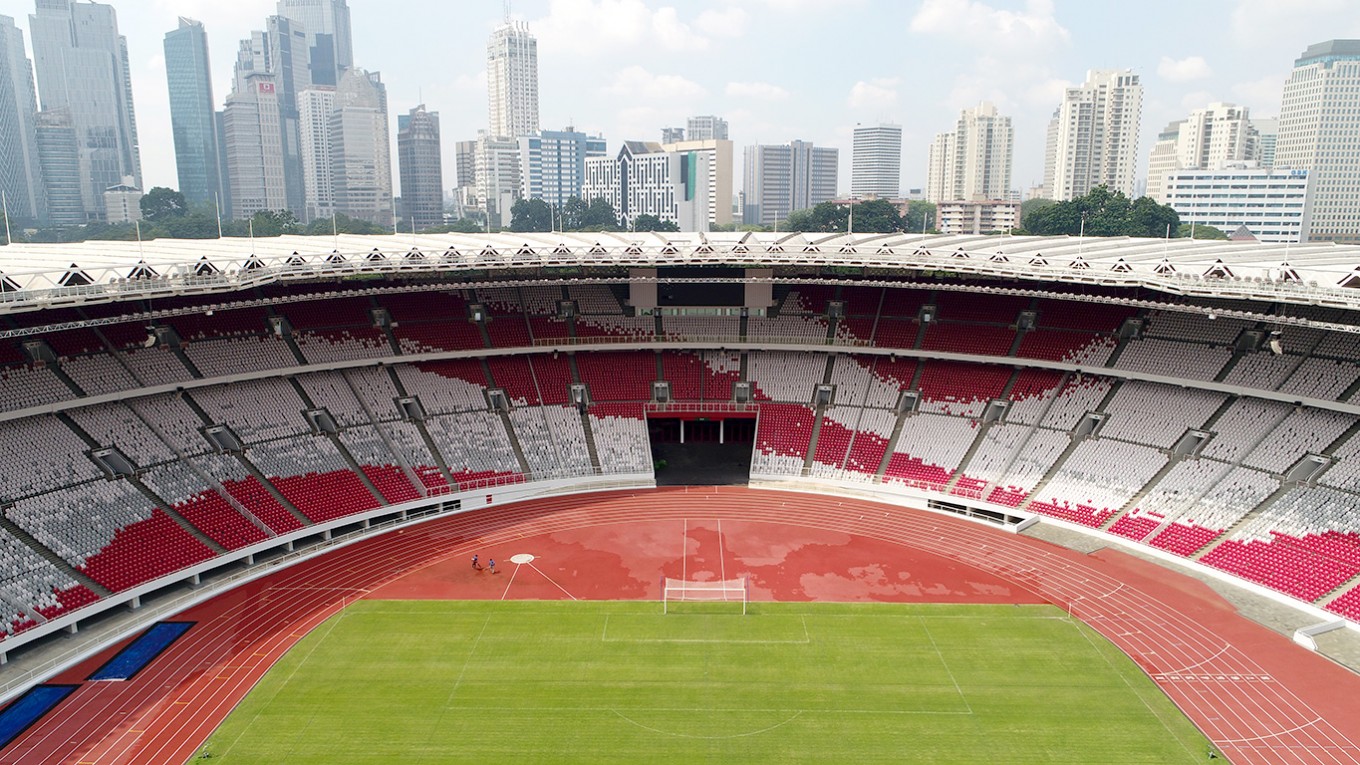The world-class Gelora Bung Karno sports complex, a legacy of Indonesia’s founding father Sukarno, has been renovated for the upcoming Asian Games, which will be cohosted by Jakarta and Palembang, South Sumatra. The Jakarta Post sports correspondent Ramadani Saputra has taken a look at the history of the sports complex, from its inauguration to what it looks like today after having gone through a US$205 million renovation.
by Ramadani SaputraIn many parts of the world, sports stadiums signify the greatness of a country. Spain boasts Camp Nou. Built in the 1950s to seat 99,000, it is Europe’s largest stadium. China has the 80,000-seat Beijing National Stadium, also known as the Bird’s Nest for its unique design.
As the largest nation in Southeast Asia, Indonesia is proud to have the newly revamped Gelora Bung Karno sports complex. Its main stadium has a capacity of 76,000 (formerly 88,000). AS Roma, PSV Eindhoven, Manchester United, Arsenal, AC Milan and Bayern Munich are some of the world’s biggest clubs that have played at the stadium throughout the decades.
Located at the prime site of Senayan, Central Jakarta, the 120-hectare sports facility was built in the 1960s when Indonesia had the honor of playing host to the fourth edition of the multisport Asian Games in 1962, which involved 17 nations. The prestigious Games are held every four years.
It was a testament to Indonesia’s first president Sukarno, who was known for launching megaprojects. As the story goes, the idea of building a gigantic sporting complex came out of his ire at the rest of the world, which doubted young Indonesia’s ability to have a world-class stadium.
The history of the sports complex is discussed in a classic book entitled Dari Gelora Bung Karno ke Gelora Bung Karno by Kompas journalist Julius Pour.
Bung Karno, as the president was famously called, was so proud of the stadium that he named it Gelora Bung Karno — a semantic play of the Indonesian word gelora (passion).
In the book, Julius recalls a story by “the great orator” Sukarno about inaugurating the gigantic facility, which had a maiden capacity of 110,000, in July 1962.


